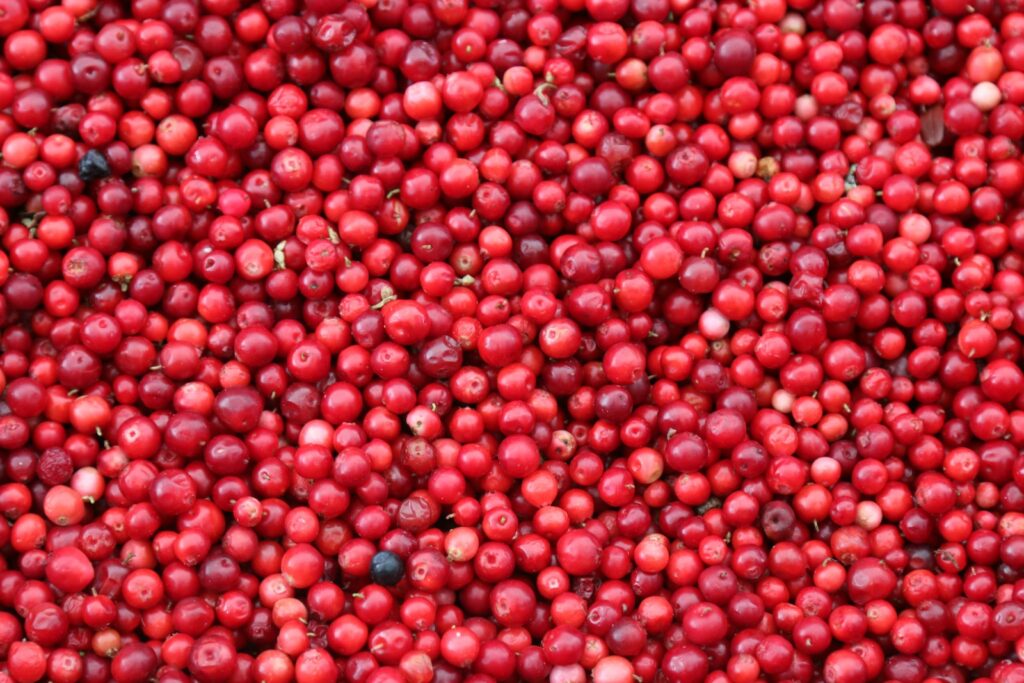
Cranberries are a popular fruit that can be consumed in various forms, including juice, dried, or fresh. While many people enjoy the tart flavor of cranberries, some may wonder if they contain seeds. The answer to this question is yes, cranberries do have seeds.
The seeds of cranberries are small and often go unnoticed when eating the fruit. They are typically found inside the flesh of the berry and can be eaten along with it. However, some people choose to remove the seeds before consuming cranberries, as they may find them unpleasant to eat.
Despite the presence of seeds, cranberries remain a healthy and nutritious fruit. They are a good source of vitamin C and fiber, and have been linked to various health benefits, including improved heart health and a reduced risk of urinary tract infections. Overall, cranberries can be a great addition to a healthy and balanced diet.
Table of Contents
Does Cranberry Have Seeds
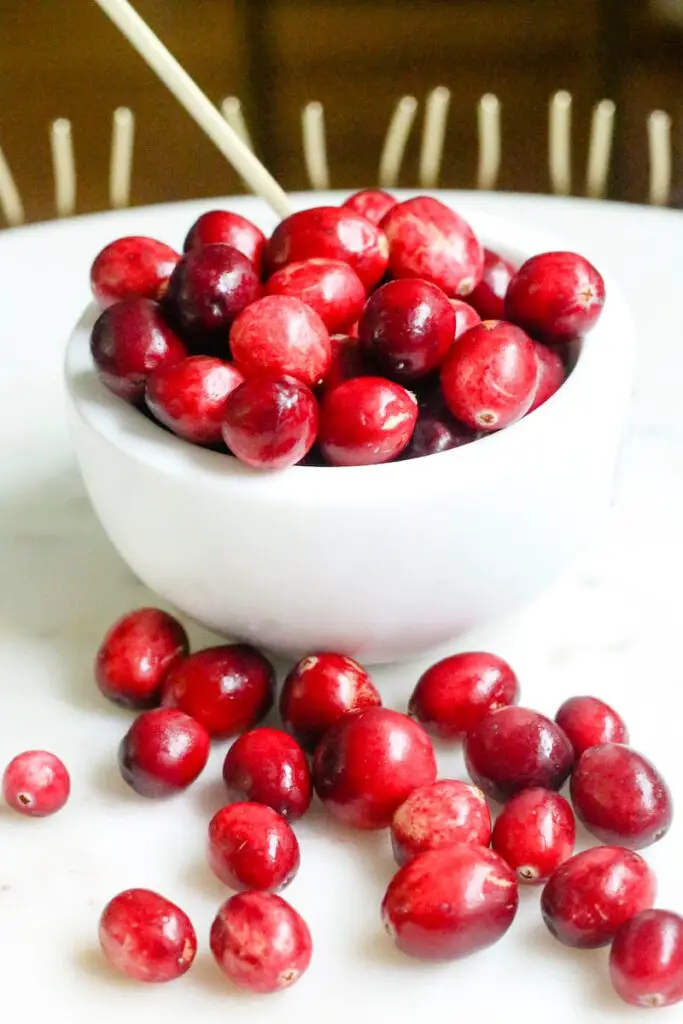
Cranberries are small, tart berries that are commonly used in cooking and baking. They are also often consumed as a juice or supplement due to their potential health benefits. One question that people often have about cranberries is whether or not they have seeds.
The answer is yes, cranberries do have seeds. However, these seeds are not typically consumed when the berries are eaten or processed into juice. This is because the seeds are very small and hard, and can be difficult to remove from the fruit.
When cranberries are harvested, they are often mechanically separated from their seeds using a process known as “de-seeding”. This involves crushing the berries and then separating the seeds from the pulp using a machine. The resulting juice or pulp is then used to make cranberry products such as juice, sauce, and dried cranberries.
While cranberry seeds are not typically consumed, they do contain some nutrients that may be beneficial to health. For example, cranberry seeds are a good source of fiber, which can help promote healthy digestion. They also contain antioxidants, which can help protect the body against damage from free radicals.
In summary, while cranberries do have seeds, these seeds are not typically consumed due to their small size and hardness. However, they do contain some beneficial nutrients and may be used in certain applications such as supplements or as a source of fiber.
The Cranberry Plant
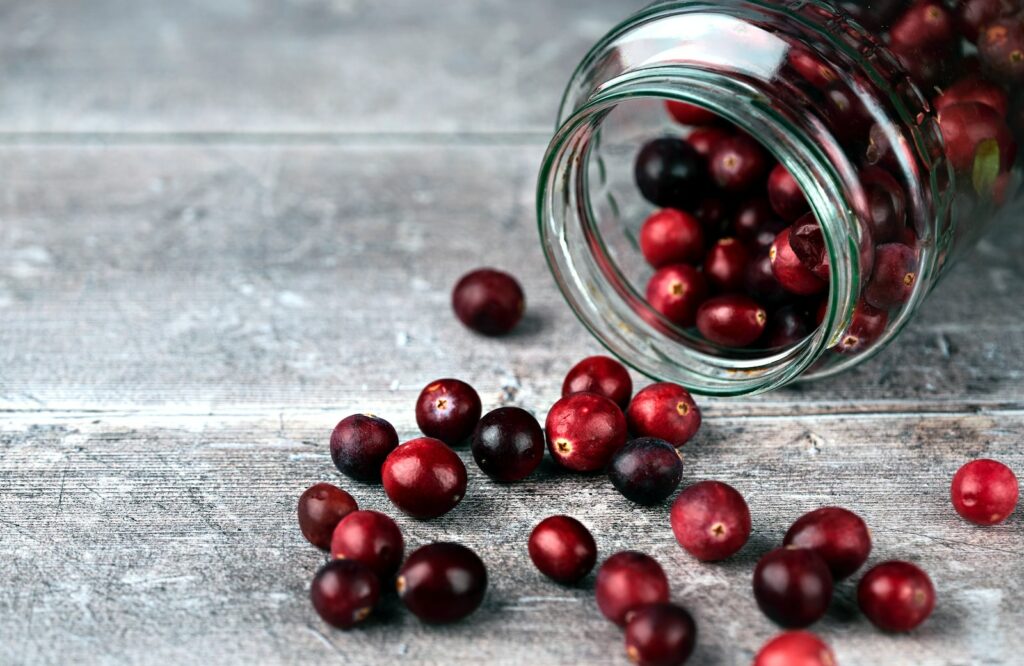
The cranberry plant, also known as Vaccinium macrocarpon, is an evergreen shrub that belongs to the heath family. It is native to North America and is widely cultivated for its fruit, which is used in various food products such as juices, sauces, and jams.
The cranberry plant is a low-growing shrub that typically reaches a height of about 6 to 12 inches. It has small, glossy leaves that are dark green in color and oval-shaped. The plant produces pink flowers in the spring, which are followed by the fruit in the fall.
One interesting fact about the cranberry plant is that it requires acidic soil to grow. This is because the plant has a shallow root system and cannot absorb nutrients from alkaline soil. As a result, most cranberry farms are located in areas with acidic soil, such as bogs and marshes.
Another interesting fact about the cranberry plant is that it does not have seeds inside the fruit. Instead, the seeds are located on the outside of the fruit, embedded in the flesh. This makes the fruit unique from other berries such as strawberries and blueberries, which have seeds inside the fruit.
Overall, the cranberry plant is an important agricultural crop that is widely consumed around the world. Its unique flavor and health benefits make it a popular ingredient in many food products.
Growing Cranberries
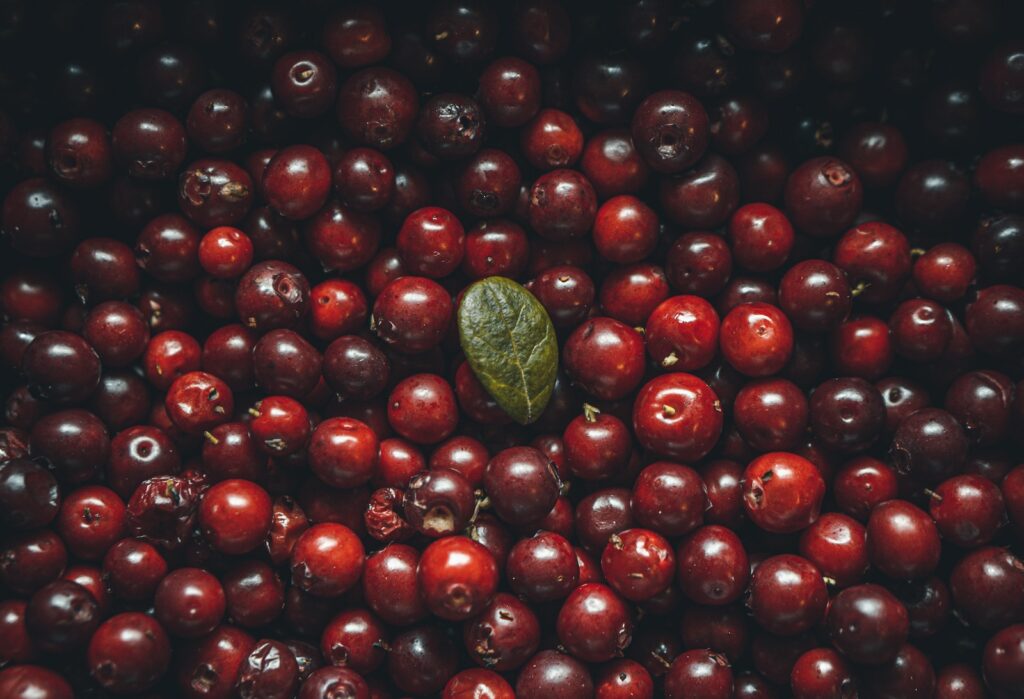
Cranberries are a popular fruit that are often used in baking and cooking. While they can be found in most grocery stores, growing your own cranberries can be a fun and rewarding experience. In this section, we will cover the basics of growing cranberries, including planting, care, and harvesting.
Planting
Cranberries are typically grown in North America, where the climate and soil are ideal for their growth. When planting cranberries, it is important to choose a location that receives full sun and has well-draining, acidic soil. Cranberries can be planted in pots or directly in the ground, and can be started from cuttings, seedlings, or powdered rooting hormone.
Before planting, it is important to prepare the soil by adding bone meal and adjusting the pH to between 4.0 and 5.5. Cranberries also require good drainage, so it is important to choose a location with good drainage or to add drainage to the soil.
Germination and Growth
Cranberries can be started from seed, but this process can be difficult and time-consuming. It is often easier to start cranberries from cuttings or seedlings. Cranberries can also be propagated from stem cuttings or runners.
Once planted, cranberries require patience and care to grow. They require regular watering and should be fertilized with a rooting hormone to encourage growth. Cranberries will begin to produce fruit in their second or third year of growth.
Harvest
Cranberries are typically harvested in the fall, when the fruit is ripe. Cranberries are harvested by flooding the fields where they are grown, which causes the berries to float to the surface. The berries are then collected and processed.
In conclusion, growing cranberries can be a fun and rewarding experience. With the right soil, climate, and care, cranberries can be grown successfully in North America. Whether starting from cuttings or seedlings, or propagating from stem cuttings or runners, growing cranberries requires patience, care, and attention to detail.
Cranberries in the Kitchen
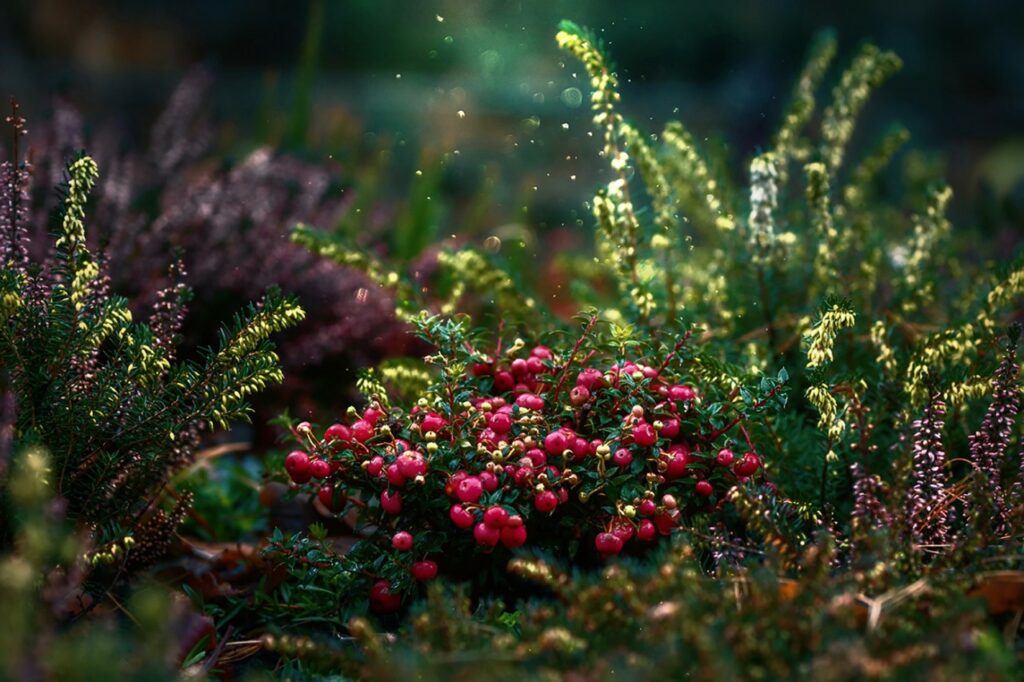
Cranberries are a versatile fruit that can be used in a variety of dishes, from sweet to savory. They are commonly used in juices, sauces, and baked goods.
Juice
Cranberry juice is a popular drink that is known for its tart taste. It is often mixed with other juices, such as apple or orange juice, to balance out the flavor. Cranberry juice can also be used as a base for cocktails.
Fruit
Fresh cranberries can be eaten on their own or used as a topping for oatmeal or yogurt. They can also be added to salads for a pop of color and flavor.
Cranberry Juice
Cranberry juice is often used in recipes for sauces and marinades. It can also be used to make smoothies or added to oatmeal for extra flavor.
Cranberry Sauce
Cranberry sauce is a classic side dish served during Thanksgiving and Christmas. It is often paired with turkey and other holiday dishes.
Smoothie
Cranberries can be used to make a refreshing smoothie. They pair well with other berries, such as strawberries and blueberries.
Oatmeal
Fresh cranberries can be added to oatmeal for a sweet and tart breakfast. They can also be used to make muffins and other baked goods.
Salad
Cranberries can be added to salads for a burst of flavor. They pair well with goat cheese, nuts, and other fruits.
Jelly
Cranberry jelly is a sweet spread that can be used on toast or as a topping for desserts.
Muffins, Pies, and Cakes
Cranberries are a popular ingredient in baked goods, such as muffins, pies, and cakes. They add a tart flavor and a pop of color to these sweet treats.
Nutritional Value of Cranberries
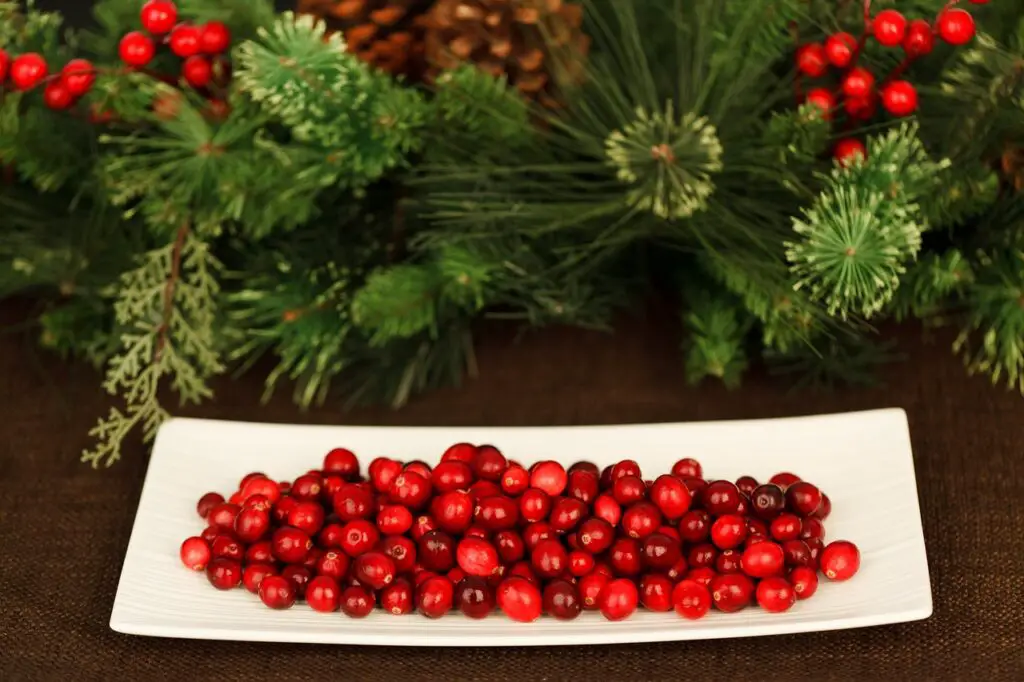
Cranberries are small, tart, red berries that are commonly consumed in the form of juice, sauce, or dried fruit. They are a rich source of nutrients and antioxidants that can provide several health benefits. This section will discuss the nutritional value of cranberries and the various nutrients they contain.
Nutrients
Cranberries are low in calories and high in vitamins and minerals. One cup of raw cranberries (100 grams) contains the following nutrients:
- Calories: 46
- Carbohydrates: 12.2 grams
- Fiber: 4.6 grams
- Protein: 0.4 grams
- Fat: 0.1 grams
- Vitamin C: 16.4 mg (27% of the daily value)
- Vitamin E: 1.2 mg (6% of the daily value)
- Vitamin A: 60 IU (1% of the daily value)
- Calcium: 8 mg (1% of the daily value)
- Iron: 0.3 mg (2% of the daily value)
- Magnesium: 6 mg (2% of the daily value)
- Phosphorus: 13 mg (1% of the daily value)
- Potassium: 85 mg (2% of the daily value)
- Sodium: 2 mg (0% of the daily value)
Antioxidants
Cranberries are rich in antioxidants, which are compounds that protect the body from damage caused by free radicals. Free radicals are unstable molecules that can damage cells and contribute to the development of chronic diseases such as cancer, heart disease, and Alzheimer’s disease. Cranberries contain several types of antioxidants, including flavonoids, anthocyanins, and proanthocyanidins.
Fiber
Cranberries are a good source of fiber, which is important for digestive health. Fiber helps to regulate bowel movements, prevent constipation, and reduce the risk of colon cancer. One cup of cranberries contains 4.6 grams of fiber, which is about 18% of the recommended daily intake.
In conclusion, cranberries are a nutrient-dense fruit that can provide several health benefits. They are a good source of vitamins, minerals, antioxidants, and fiber, all of which are essential for maintaining good health.
Health Benefits of Cranberries

Cranberries are packed with nutrients and antioxidants, making them a popular choice for health-conscious individuals. They are low in calories and high in fiber, vitamin C, and vitamin E. Cranberries are also loaded with phytochemicals, which are natural compounds that protect against disease.
One of the most well-known health benefits of cranberries is their ability to prevent and treat urinary tract infections (UTIs). Cranberries contain proanthocyanidins, which prevent bacteria from sticking to the walls of the urinary tract. This helps to flush out harmful bacteria and prevent infections.
In addition to UTIs, cranberries may also help to prevent other types of infections. Studies have shown that the antioxidants in cranberries can help to boost the immune system and protect against harmful bacteria and viruses.
Cranberries may also have anti-cancer properties. The phytochemicals in cranberries have been shown to inhibit the growth of cancer cells and prevent the formation of tumors. They may also help to reduce inflammation and oxidative stress, which are both risk factors for cancer.
Other potential health benefits of cranberries include:
- Lowering cholesterol levels
- Regulating blood sugar levels
- Reducing inflammation
- Protecting against free radicals
- Reducing the risk of stroke
- Helping with weight loss
- Managing diabetes
Overall, cranberries are a nutritious and delicious fruit that can provide a wide range of health benefits. Incorporating cranberries into your diet can help to improve your overall health and wellbeing.
Cranberry Products

Cranberries are a versatile fruit that can be used in a variety of products, from food to skincare. Cranberry seed oil, extract, and essential oil are commonly used in personal care products due to their purported benefits for the skin. Additionally, cranberry extract is often used in supplements for its potential health benefits.
Cranberry Seed Oil:
Cranberry seed oil is a popular ingredient in skincare products due to its high concentration of antioxidants and fatty acids. These properties make it a great option for moisturizing and nourishing the skin. It is often used in facial oils, serums, and moisturizers.
Cranberry seed oil can also be used in hair care products to help moisturize and strengthen the hair. It is often used in shampoos and conditioners to help promote healthy hair growth.
Cranberry Extract:
Cranberry extract is commonly used in supplements due to its potential health benefits. It is believed to help support urinary tract health, as well as provide antioxidant support for the body.
Cranberry extract is also used in skincare products for its potential anti-inflammatory properties. It is often used in exfoliating scrubs and cleansers to help remove dead skin cells and promote a brighter, more even complexion.
Essential Oil:
Cranberry essential oil is often used in aromatherapy due to its refreshing, uplifting scent. It is believed to help promote relaxation and reduce stress. Additionally, it may have anti-inflammatory properties that can help soothe the skin.
Overall, cranberry products can be a great addition to a healthy lifestyle and skincare routine. However, it is important to note that more research is needed to fully understand their potential benefits. As with any new product, it is important to patch test before use and consult with a healthcare provider if you have any concerns.
Cranberries as a Superfood
Cranberries are often considered a superfood due to their numerous health benefits. They are a type of fruit that belongs to the Ericaceae family, which also includes blueberries. Cranberries are low in calories, making them an excellent addition to a healthy diet.
One of the most notable benefits of cranberries is their high antioxidant content. Antioxidants are compounds that help protect the body from damage caused by free radicals, which can lead to chronic diseases such as cancer and heart disease. Cranberries are also high in vitamin C, which is essential for a healthy immune system.
In addition to their antioxidant properties, cranberries are also beneficial for urinary tract health. They contain compounds that can help prevent and treat urinary tract infections. Cranberry juice is often recommended for those who suffer from frequent UTIs.
Cranberries can be enjoyed in a variety of ways, such as in trail mix or as a topping for oatmeal. They can also be added to salads or used to make sauces for meats. Farmers often grow cranberries in bogs, which are flooded fields that allow the berries to float to the surface for easy harvesting.
Overall, cranberries are a nutritious and delicious addition to any diet. Whether eaten on their own or used in recipes, they offer numerous health benefits and are a true superfood.